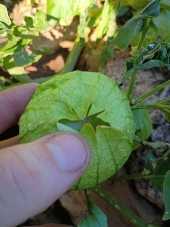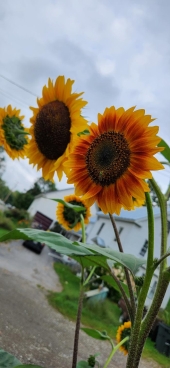Yep, it was just a few hours barely below freezing, so the fruits definitely didn't get anywhere near frozen through. But apparently that was enough to turn all the squash leaves and about 2/3rds of the tomatillo leaves into something resembling sauteed spinach. My concern was more about the maturity of the fruit, and whether the seeds in their current state would have a chance at being viable. Sounds like the consensus is that they're mature enough to at least be worth a shot. Thanks all!
Re: shorter season varieties -- yep, I'm definitely always aiming for those. I think the problem this year was probably something else, though. According to the advertised days-to-maturity, all these guys should have been good to go weeks ago. And I made a point of buying seed from as nearby as possible, so they should in theory be better adapted to my environment than some random "short season variety" from some mega seed producer. But for some reason(s), everything seemed to just stall out for a whole month or two in the middle of summer. Not really wilting or yellowing or showing other obvious signs of being unhappy, but just not growing any larger. So besides planting earlier, I could also try some shade cloth and see if that helps. Or maybe the issue is my sometimes-inconsistent watering, and some automated drip lines could help keep the plants happier. Or maybe I just didn't make my "raised" beds deep enough; the soil they're sitting on top of is kinda garbage, barely any weeds even grow there, so I can imagine that the plants might basically be root-bound within the somewhat thin layer of decent soil. Lots of things to try, lots of things to learn...








